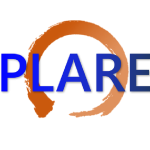Potbbang Radio Interview
2020-12-02
Nuclear Fusion Not A Distant Dream

Since the first plasma in 2008, KSTAR scientists have been working toward achieving steady-state operation of the fusion reactor, and it has delivered promising outcomes from experiments carried out every year, says Na Yong-Su, another nuclear engineering professor at SNU.
The knowledge and technology obtained through the operation of KSTAR, EAST and other tokamak devices around the world will be the basis of the International Thermonuclear Experimental Reactor (ITER) project, an ambitious energy project that involves Korea and 34 other nations to build a gigantic experimental fusion reactor. Construction of this device is underway in southern France, due for completion in 2025.
“I believe the construction is more than halfway completed,” says Na, who also serves as chairman of ITER Integrated Operation Scenario International Expert Group. “We are expecting a first plasma in 2025 (using the ITER facility). In line with the plan, Korea is drawing up a roadmap, according to which the first nuclear fusion power plant is to be constructed in the 2040s and 2050s.”
Jenny Lee Staff Reporter jlee@wired.kr
